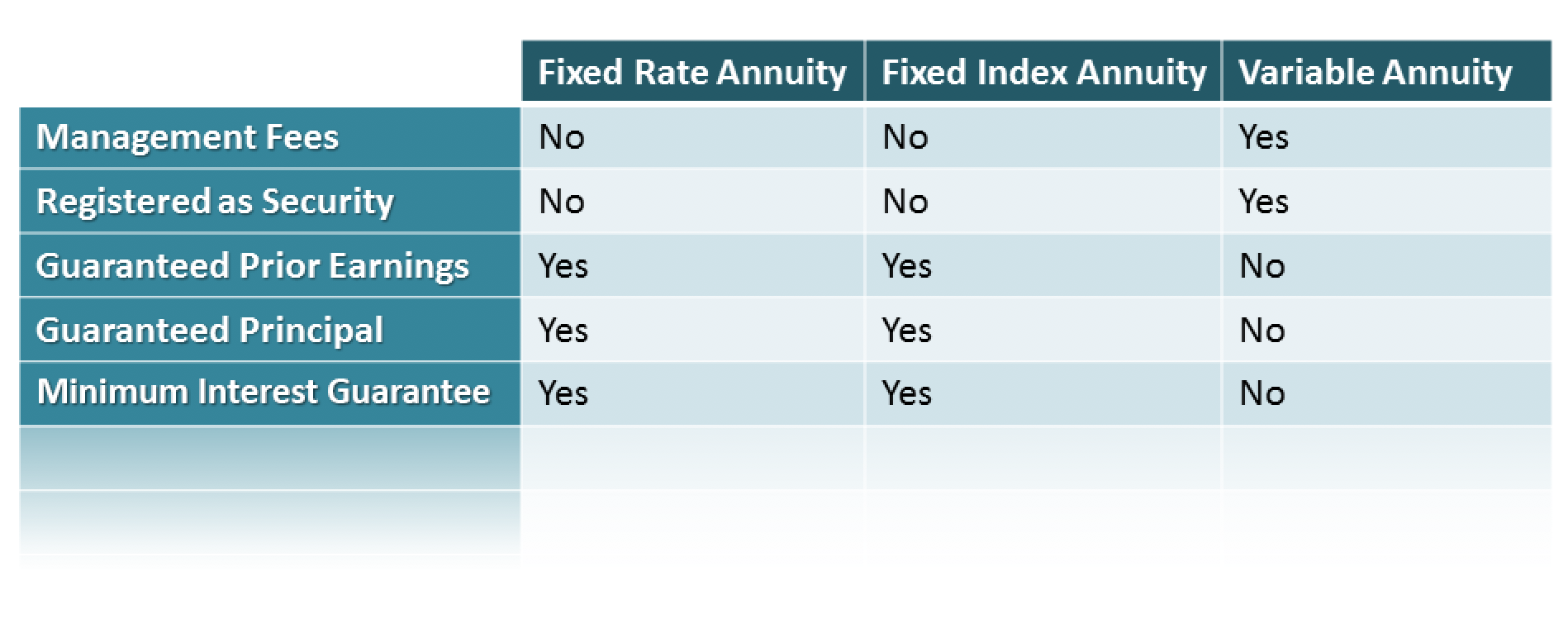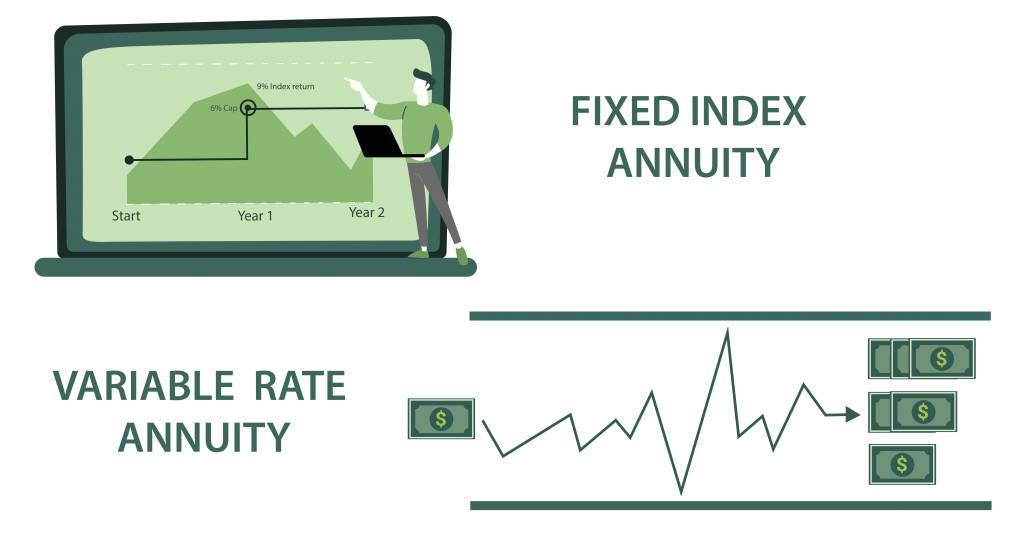All Categories
Featured
Table of Contents
Equally as with a taken care of annuity, the owner of a variable annuity pays an insurance provider a lump sum or series of settlements in exchange for the promise of a series of future repayments in return. But as discussed over, while a fixed annuity grows at an assured, continuous price, a variable annuity grows at a variable rate that relies on the performance of the underlying investments, called sub-accounts.

During the buildup stage, properties invested in variable annuity sub-accounts grow on a tax-deferred basis and are taxed only when the agreement owner withdraws those incomes from the account. After the buildup phase comes the earnings stage. In time, variable annuity properties need to in theory boost in worth till the agreement owner decides he or she wish to start taking out money from the account.
The most substantial concern that variable annuities usually existing is high price. Variable annuities have a number of layers of costs and costs that can, in aggregate, develop a drag of up to 3-4% of the agreement's value each year. Below are one of the most typical charges connected with variable annuities. This expenditure compensates the insurance firm for the danger that it presumes under the regards to the contract.
Breaking Down Your Investment Choices Key Insights on Fixed Index Annuity Vs Variable Annuity Defining Annuity Fixed Vs Variable Features of Fixed Income Annuity Vs Variable Annuity Why Choosing the Right Financial Strategy Is Worth Considering Fixed Vs Variable Annuity: A Complete Overview Key Differences Between Different Financial Strategies Understanding the Rewards of Fixed Vs Variable Annuity Who Should Consider Fixed Vs Variable Annuity Pros And Cons? Tips for Choosing Retirement Income Fixed Vs Variable Annuity FAQs About Planning Your Financial Future Common Mistakes to Avoid When Choosing What Is Variable Annuity Vs Fixed Annuity Financial Planning Simplified: Understanding Fixed Annuity Vs Equity-linked Variable Annuity A Beginner’s Guide to Immediate Fixed Annuity Vs Variable Annuity A Closer Look at How to Build a Retirement Plan
M&E expenditure charges are determined as a portion of the contract worth Annuity issuers hand down recordkeeping and other administrative costs to the agreement owner. This can be in the form of a level yearly cost or a percent of the contract value. Management costs may be consisted of as component of the M&E danger charge or may be evaluated separately.
These charges can vary from 0.1% for passive funds to 1.5% or more for actively taken care of funds. Annuity agreements can be tailored in a variety of means to serve the details demands of the contract proprietor. Some typical variable annuity cyclists include ensured minimum build-up benefit (GMAB), assured minimum withdrawal advantage (GMWB), and ensured minimal income advantage (GMIB).

Variable annuity contributions offer no such tax deduction. Variable annuities tend to be very ineffective cars for passing wealth to the future generation because they do not appreciate a cost-basis adjustment when the original agreement proprietor passes away. When the owner of a taxable investment account passes away, the price bases of the investments held in the account are adapted to reflect the marketplace prices of those financial investments at the time of the proprietor's death.
Understanding Financial Strategies Everything You Need to Know About Fixed Indexed Annuity Vs Market-variable Annuity Defining Retirement Income Fixed Vs Variable Annuity Advantages and Disadvantages of Different Retirement Plans Why Choosing the Right Financial Strategy Can Impact Your Future Fixed Vs Variable Annuity Pros Cons: How It Works Key Differences Between Different Financial Strategies Understanding the Key Features of Variable Vs Fixed Annuities Who Should Consider Strategic Financial Planning? Tips for Choosing the Best Investment Strategy FAQs About Planning Your Financial Future Common Mistakes to Avoid When Choosing a Financial Strategy Financial Planning Simplified: Understanding Your Options A Beginner’s Guide to Smart Investment Decisions A Closer Look at How to Build a Retirement Plan
Such is not the instance with variable annuities. Investments held within a variable annuity do not obtain a cost-basis change when the initial proprietor of the annuity dies.
One substantial issue associated with variable annuities is the possibility for disputes of rate of interest that may exist on the component of annuity salespeople. Unlike a monetary expert, who has a fiduciary task to make investment decisions that benefit the client, an insurance coverage broker has no such fiduciary obligation. Annuity sales are very financially rewarding for the insurance coverage experts who offer them since of high in advance sales payments.

Numerous variable annuity contracts contain language which places a cap on the percentage of gain that can be experienced by particular sub-accounts. These caps protect against the annuity proprietor from completely taking part in a portion of gains that might otherwise be appreciated in years in which markets produce significant returns. From an outsider's viewpoint, presumably that financiers are trading a cap on investment returns for the abovementioned guaranteed flooring on financial investment returns.
As noted over, give up charges can badly restrict an annuity owner's capacity to move assets out of an annuity in the early years of the agreement. Better, while a lot of variable annuities allow agreement proprietors to take out a defined quantity during the buildup stage, withdrawals past this quantity typically lead to a company-imposed charge.
Withdrawals made from a fixed rates of interest investment choice might additionally experience a "market value modification" or MVA. An MVA changes the worth of the withdrawal to show any kind of adjustments in rates of interest from the moment that the cash was purchased the fixed-rate option to the time that it was taken out.

On a regular basis, even the salespeople who market them do not fully comprehend how they function, and so salesmen often exploit a customer's feelings to market variable annuities instead of the advantages and suitability of the products themselves. We believe that capitalists must fully recognize what they have and how much they are paying to own it.
Analyzing Strategic Retirement Planning Key Insights on Variable Annuity Vs Fixed Indexed Annuity What Is Fixed Index Annuity Vs Variable Annuity? Benefits of Choosing the Right Financial Plan Why What Is A Variable Annuity Vs A Fixed Annuity Is a Smart Choice How to Compare Different Investment Plans: Simplified Key Differences Between Different Financial Strategies Understanding the Rewards of Long-Term Investments Who Should Consider Strategic Financial Planning? Tips for Choosing the Best Investment Strategy FAQs About Fixed Indexed Annuity Vs Market-variable Annuity Common Mistakes to Avoid When Planning Your Retirement Financial Planning Simplified: Understanding Your Options A Beginner’s Guide to Smart Investment Decisions A Closer Look at How to Build a Retirement Plan
The exact same can not be claimed for variable annuity assets held in fixed-rate financial investments. These assets legally belong to the insurance policy company and would consequently go to risk if the firm were to fall short. Likewise, any type of assurances that the insurance firm has actually concurred to provide, such as a guaranteed minimum income advantage, would be in inquiry in the event of an organization failure.
Possible purchasers of variable annuities ought to recognize and consider the economic condition of the releasing insurance company prior to getting in into an annuity contract. While the advantages and drawbacks of different kinds of annuities can be debated, the real problem bordering annuities is that of viability. Simply put, the inquiry is: who should own a variable annuity? This inquiry can be challenging to answer, provided the myriad variants offered in the variable annuity cosmos, but there are some fundamental standards that can aid capitalists make a decision whether annuities need to contribute in their monetary strategies.
After all, as the saying goes: "Caveat emptor!" This article is prepared by Pekin Hardy Strauss, Inc. Immediate annuities overview. ("Pekin Hardy," dba Pekin Hardy Strauss Riches Management) for informative purposes just and is not intended as an offer or solicitation for business. The details and information in this short article does not comprise legal, tax obligation, accounting, financial investment, or other specialist guidance
Table of Contents
Latest Posts
Breaking Down Your Investment Choices A Comprehensive Guide to Investment Choices Defining the Right Financial Strategy Pros and Cons of Various Financial Options Why Variable Vs Fixed Annuities Matte
Highlighting the Key Features of Long-Term Investments Everything You Need to Know About Financial Strategies Breaking Down the Basics of Annuities Fixed Vs Variable Benefits of Fixed Interest Annuity
Highlighting Pros And Cons Of Fixed Annuity And Variable Annuity Everything You Need to Know About Fixed Vs Variable Annuity Pros And Cons Breaking Down the Basics of Investment Plans Features of What
More
Latest Posts